
In the category of Helping Relationships on the National Counselor Examination (NCE), the Counselor Preparation Comprehensive Examination (CPCE), or another counseling exam, you’ll want to be aware of reinforcement and punishment.
In this post, we cover the most common questions—what are reinforcement and punishment? What is positive reinforcement and how is it different from negative reinforcement? We’ll also cover positive punishment and negative punishment. We’ll dig into reinforcement schedules, including continuous and interval, along with fixed and variable schedules.
Reinforcement is something that will increase a desired behavior. Let’s imagine that we’re a teacher and we see a student doing something that we want them to do more of. Using reinforcement is a way to encourage them to continue doing the behavior that we see as beneficial (such as praising the student).
Punishment is meant to decrease the chances a behavior being repeated. If we continue the example above, as the teacher, if we see a student doing something unkind or unfavorable, punishment may be a way to decrease the likelihood of that behavior happening again in the future (such as scolding the student).
Both reinforcement and punishment have a positive and a negative form. It seems confusing, but here’s a way of thinking about it that might make it a bit easier to remember. Think of positive as adding to the situation. Negative is then subtracting or taking away from the situation. Let’s go over examples to help clarify this.
We’re going to continue the example that we’re a teacher.
Positive Reinforcement: If we see a student do something favorable, like getting all of their work done in class, we might use positive reinforcement by giving them a treat to reward this behavior. Now, they should be more likely to continue to get all of their work done in class in the future. The treat is reinforcing since it will make it more likely they do this again, and the treat is also a positive reinforcement since it adds something new to the situation.
Negative Reinforcement: Alternatively, we could also use negative reinforcement by telling them they don’t have to do the other worksheet they were assigned. Keep in mind, negative reinforcement is NOT punishment. Negative reinforcement is taking something out of the situation to make it more favorable. By telling the student they don’t have to do the other worksheet they were assigned, this is rewarding their good behavior during class by lightening their work load. It also makes it more likely they’ll continue to get all their work done in class in the future.
Positive Punishment: Now let’s look at something similar for punishment. If we see a student bullying another student, we might use positive punishment by having the bully write an apology letter to the student they bullied. By having them do something more that they otherwise wouldn’t have had to do, the punishment is then adding to what that student has to do, making it a positive punishment.
Negative Punishment: If we see the student bullying another student and then take away the bully’s recess time that day, that would be negative punishment. We have removed something enjoyable from the bully’s day. Having them miss recess takes away something they would have enjoyed, making it a negative punishment.
Just remember, reinforcement is meant to increase behavior. Punishment is intended to decrease behavior. If it is positive, that just means we’re adding something extra to the situation. If it is negative, that simply means that we’re taking something away.
Reinforcement schedules can also be called patterns of reinforcement. They are different patterns of when reinforcement of a behavior will occur. There are two overall categories of reinforcement, continuous or intermittent.
Continuous Reinforcement: With this reinforcement schedule, a behavior will be reinforced or rewarded every time that behavior occurs. This is best for a new behavior that is trying to be established and reinforced. If a behavior is already established, continuous reinforcement is not the most helpful for maintaining behaviors. In other words, continuous reinforcement helps to lock in a behavior in the beginning, but it is not the most helpful for keeping that behavior there.
Since continuous reinforcement is helpful for establishing a behavior, it may help to start with that and then transition to an intermittent reinforcement pattern. The process of going from continuous to intermittent reinforcement is called thinning.
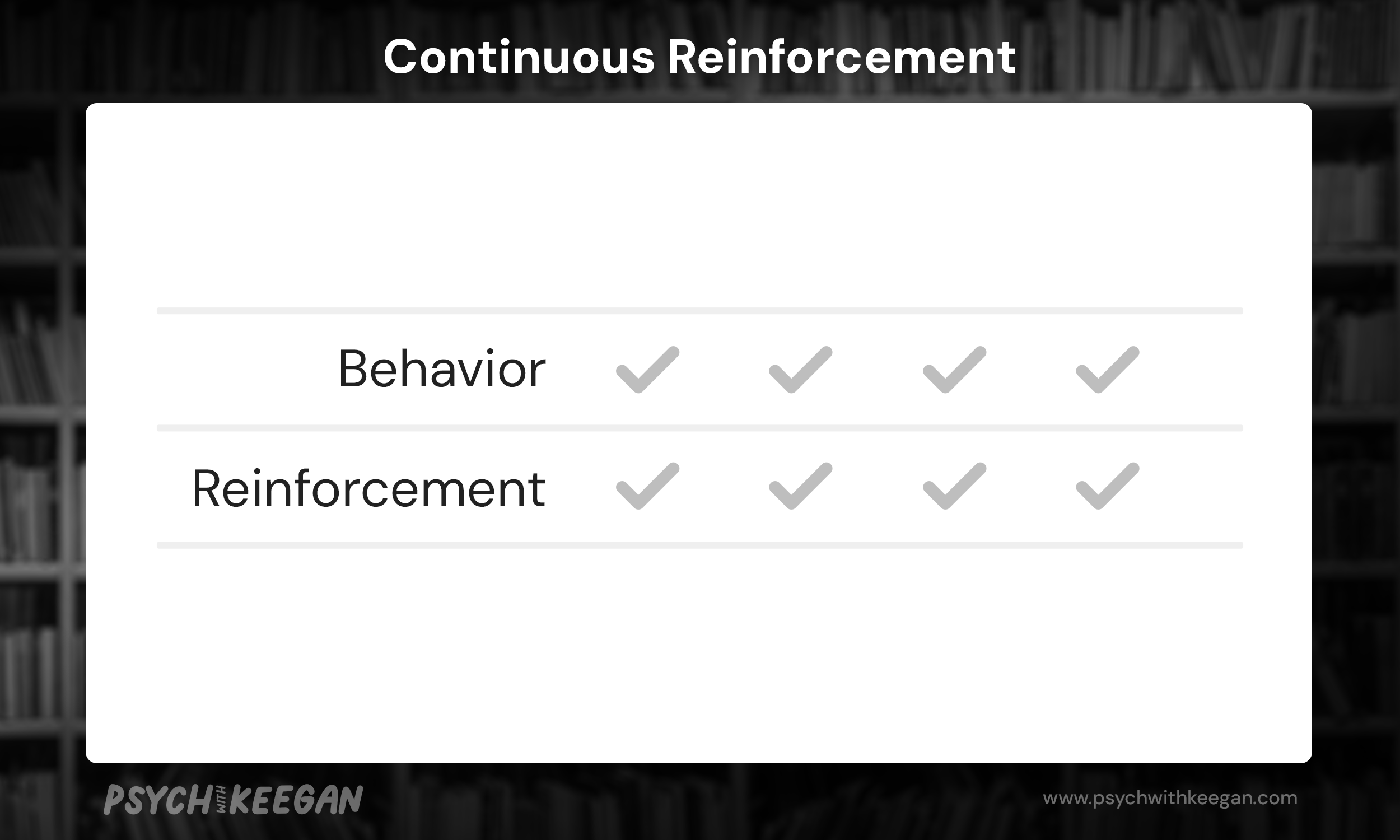
Intermittent Reinforcement: Overall, intermittent reinforcement schedules do not reinforce every behavior like continuous does. Instead, there are gaps between instances of reinforcement. Intermittent reinforcement also has two subtypes, ratio schedule or interval schedule.
Fixed Ratio Schedule: With a fixed ratio schedule, a behavior is reinforced after it has been done a certain number of times. As an example, this could mean that a behavior may be completed five times, but only reinforced on the fifth time. Once the behavior happens five more times, it is then reinforced again.
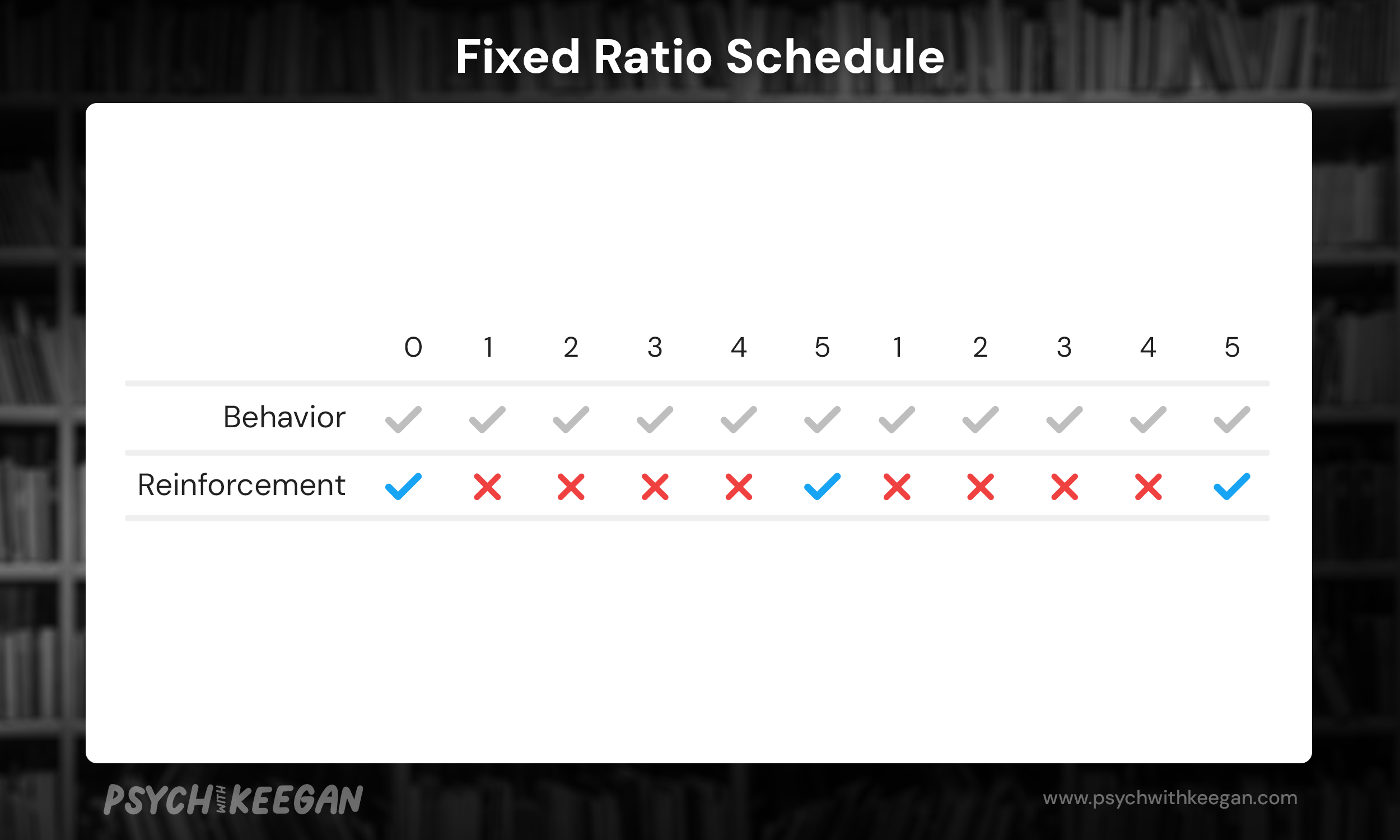
Variable Ratio Schedule: A variable ratio schedule could also be used. In this case, the number of times that a behavior must happen before being reinforced would vary. The behavior could be completed five times then reinforced. It may then be completed seven times, before it is then reinforced again. Then it may be reinforced on the fourth time after that. In other words, the number of times that a behavior must happen before being reinforced is unpredictable.
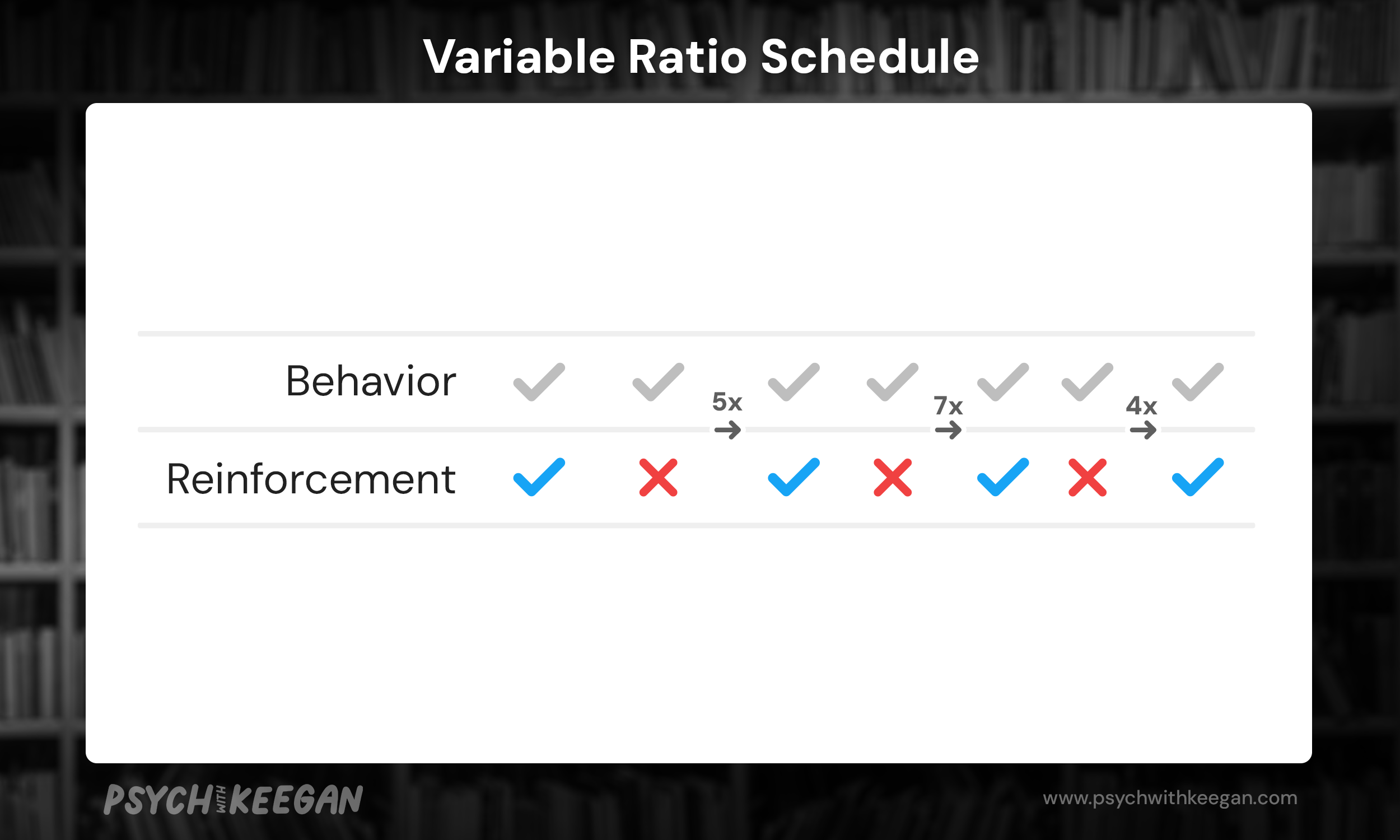
Fixed Interval Schedule: With a fixed interval schedule, the amount of time between each reinforcement would be the same. For example, a behavior may be reinforced, then 10 minutes may need to go by before it is reinforced again, then 10 minutes must again pass before it is again reinforced.
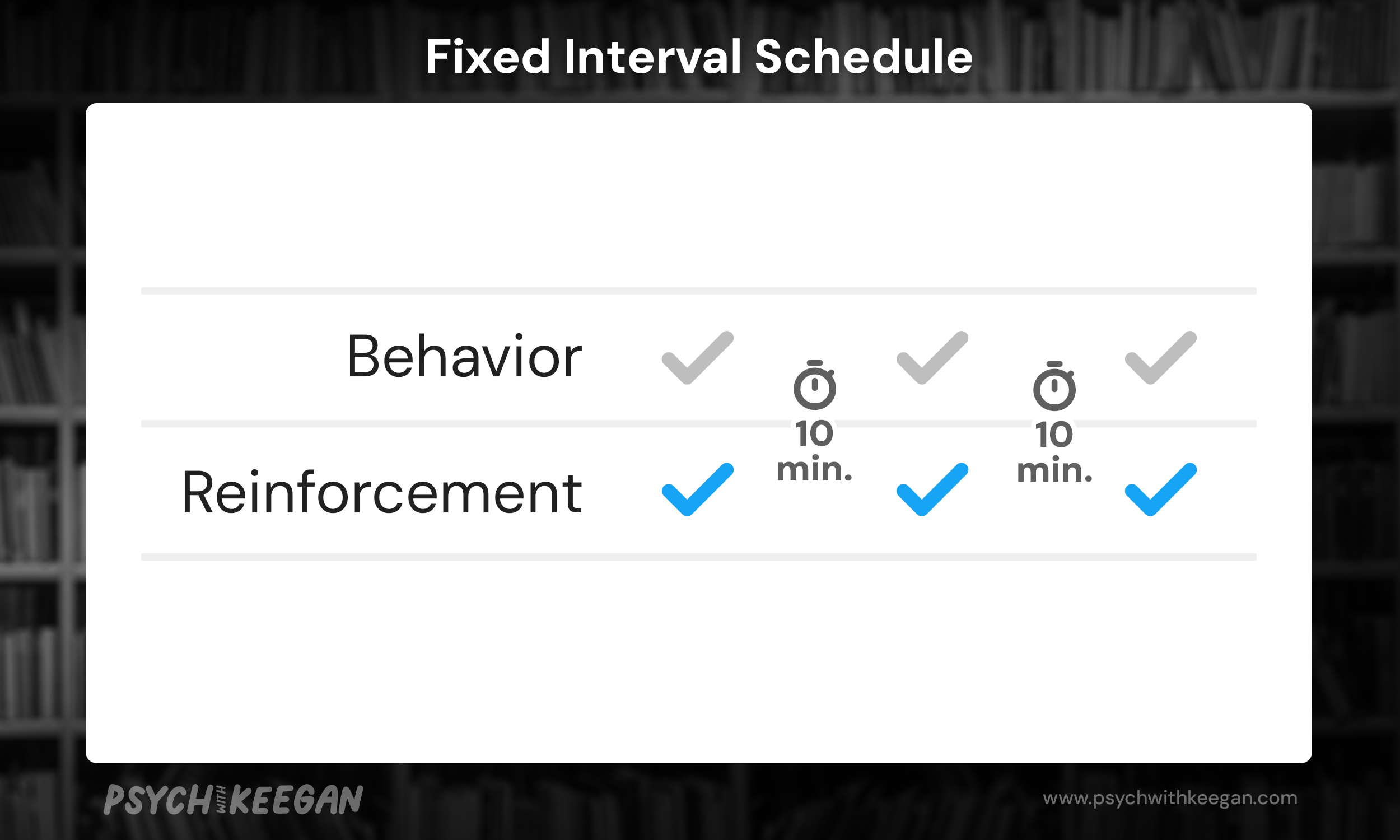
Variable Interval Schedule: For a variable interval schedule, the amount of time between reinforcement is going to change each time. For example, a behavior may be reinforced, then 12 minutes may lapse before the behavior is reinforced again. Four minutes may need to go by before the reinforcement happens the next time. The amount of time that passes before reinforcement occurs is unpredictable with a variable interval schedule.
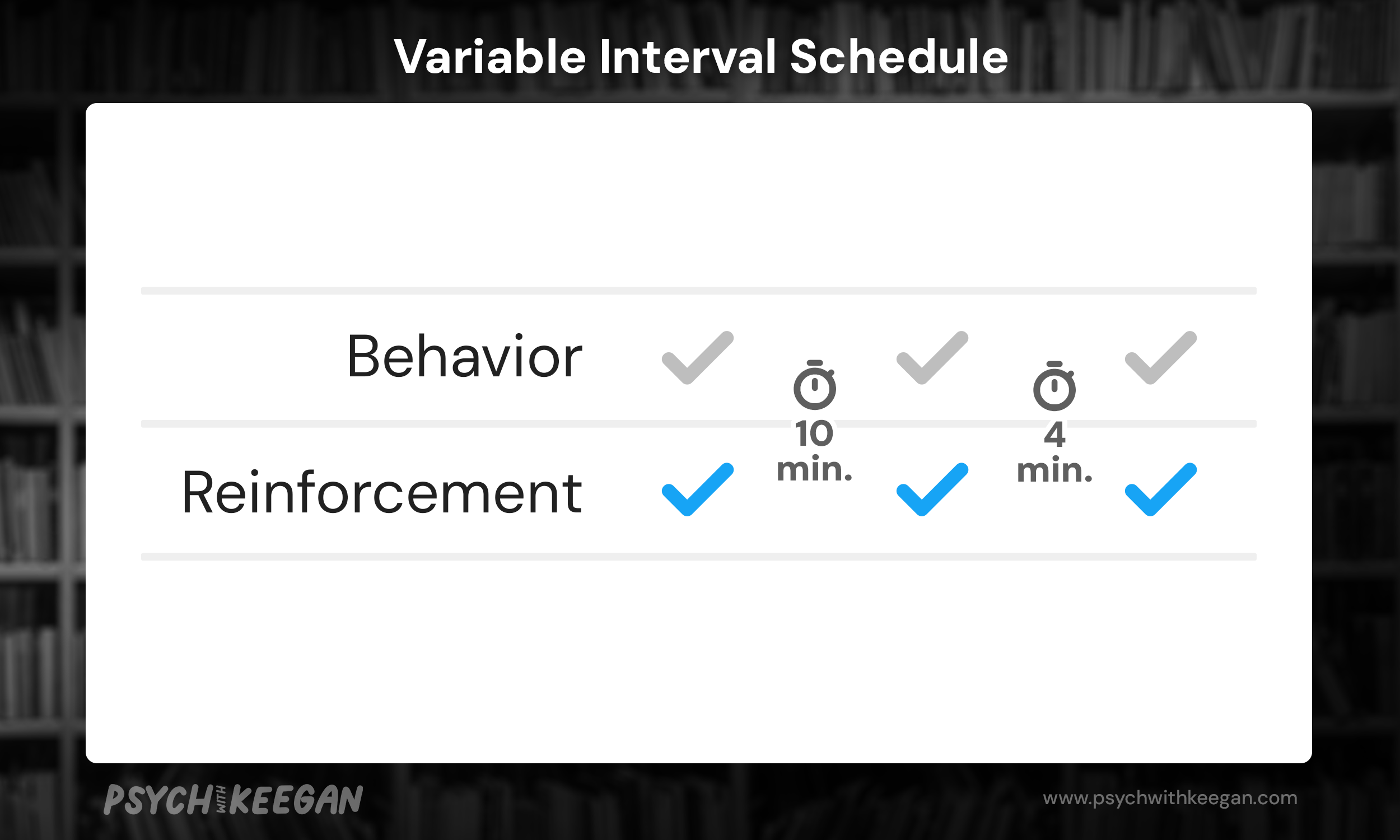
With an interval scheduled—whether it is fixed or variable—it doesn’t matter how many times a behavior happens between reinforcement, it is the time that passes that is important before the behavior is reinforced again.
To help remember ratio vs interval, remember that ratio is related to numbers, specifically the number of times a behavior happens. Interval is about time, so the time needs to pass before a behavior is reinforced.



If you or someone you know are needing immediate mental health assistance, please call or text 988, contact a local emergency telephone number, or go to the nearest emergency room.
By interacting with this website and channel, this does not constitute a therapist/client relationship. This content is intended for the purposes of entertainment and mental health education.
View additional disclaimers and notices on our Disclaimers page.